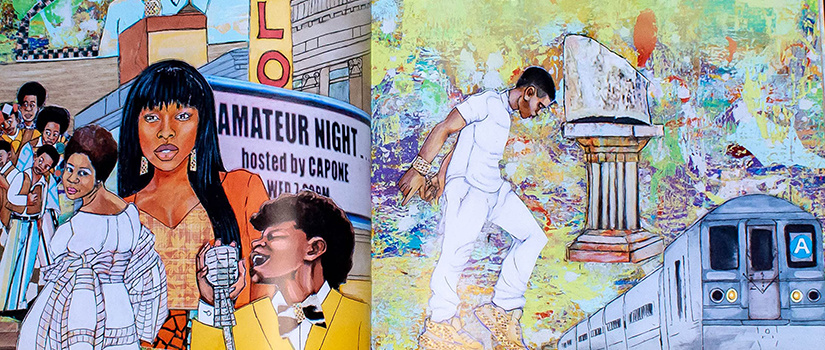An award-winning professor and highly regarded faculty member of more than three decades at the University of South Carolina, Dianne Johnson-Feelings
has published numerous acclaimed children’s books under the pen name Dinah Johnson.
Her most recent releases, “H is for Harlem” and “Indigo Dreaming,” tell unique and
richly wrought stories about the experiences of African American communities. In this
interview, Johnson-Feelings shares about her experiences as a writer, her approach
to the craft and her tips for students who want to write for children.
How did you become interested in writing children’s books?
I started writing when I was about 12 years old. I always loved the form of the children's
book, because I think that children's books pack such a big punch into a small package.
I love the combination of the visual and the written together, as well as the impulse
to read them out loud.
In graduate school, I started formally studying the history of African American children's
books. I come at this as both a writer and a scholar, but I kind of put my creative
self away while I was in grad school. When I came to UofSC and became a tenured professor,
I decided I really needed to give some attention to my creative writing again.
How do you select your illustrators?
The way the process works is that you sell your manuscript, and then the publishing
company chooses the illustrator. If you're a writer and you're working on a picture
book, you should not go ask your friend who's an illustrator to work with you because
you don’t want your publisher to be in the awkward position of saying they don’t think
it’s a good pairing. Sometimes, as a courtesy, they'll identify a few illustrators
and let you choose.
In the case of “H is for Harlem,” I'm thrilled that April Harrison is the artist.
I first saw her work a long time ago in an African American history calendar. Her
first children's book was the final book of the late Patricia C. McKissack. April Harrison won the Coretta Scott King - John Steptoe Illustrator Award for that
book.
What did April Harrison bring to your book “H is for Harlem” through her illustrations?
“H is for Harlem” is text heavy for an ABC book because there’s lots and lots of information
for each letter. That’s the nature of the project. It's not a story book that people
will sit down and read in one sitting, but something that teachers and families can
open up again and again to take time to go through and learn the history of Harlem.
I'll give you give you an example: A is for Apollo Theater in New York. So, that one
has the A train. It has the Apollo Theater. It has amateur night. It has Aretha Franklin.
There's actually a lot packed into the text, and Harrison’s illustrations mirror that
with a mixed-media, collage style to represent what I wrote.
Why is Harlem an important place for children to learn about?
Harlem is important to the cultural history of all of America and all of African America.
But as I say in the author’s note at the beginning of the book: “I hope that you read
H is for Harlem and learn a little bit about this dynamic, historic, wonderful neighborhood.
And I hope you feel inspired to learn more not only about Harlem, but about the places
where you live, and the places that you love.” I want children to think about how
every community is a vibrant place, and there are lots of people in places that are
important to the life of that place.
Tell me about your most recent book, “Indigo Dreaming.”
“Indigo Dreaming” published October 4, 2022, is actually a South Carolina story. It began as a retelling of a documentary called
Family Across the Sea, about the connection between the South Carolina and Georgia Sea Islands and the
West African country of Sierra Leone. Over the years, the book morphed into the story
of a little girl on the coast of South Carolina, imagining a little girl on the coast
of West Africa. The illustrator, Anna Cunha, is from Brazil, so we have the African
diaspora represented well.
What advice do you give to your students who want to write children's books?
Don’t talk down to child audiences, because people can tell if you're condescending
to them, and respect the form. Especially with children's books, it's so easy for
people to think that they can dash one off on the weekend. Mainly, students need to
hone their craft and listen to the words. The sound of the words is even more important
with children's books than with adult fiction. Children’s books are good literature
just like any other category of books.
Interview edited for length and clarity. Banner image is from marketing material for
"H is for Harlem" online.

